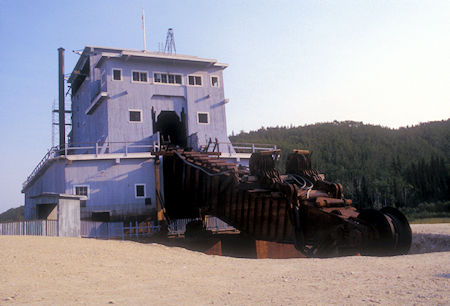
Gold Dredge #4 near Dawson City, Yukon
On August 6, 1998, I drove out to the site where gold was discovered that started the Klondike Gold Rush. Most of the area is still covered by active mining claims - now using bulldozers and scoop shovels to process the ore. Near by is a claim that is open to the public for panning - a person can stay only three days.
The steam bottoms have been processed by hand and by dredges multiple times over the years.
There is also gold on "benches" up on the hillsides where a river bottom existed prior to the last ice age (or something like that), anyway historically they also used water cannon to wash the hillsides down (like was done in northern California) and now use bulldozers.
Parks Canada has acquired numerous things related to the gold rush and is refurbishing them and offering tours. I visited Gold Dredge #4 , the largest wooden dredge in North America. There once were two of them, built and operated by the same company.
Restoration of the dredge started in 1991 and tours are now offered. This dredge operated from 1913 to 1960, was refurbished several times along the way, was all electric powered using power brought in via pole lines from a power plant in the area.
The newer/larger dredges like this one got to the bottom of the gravel and even a few feet into the bed rock - very profitable operation.
Dredge No. 4 National Historic Site of Canada
Adapted from Parks Canada Information
Not long after gold was discovered in large quantities in the Klondike, dredges were brought into the Yukon, the first dredge being built in the fall of 1899. One of the two dozen dredges that worked this area, Dredge No. 4 rests on Claim No. 17 Below Discovery on Bonanza Creek near the spot where it ceased operations in 1960. The largest wooden hull, bucket-line dredge in North America, it was designed by the Marion Steam Shovel Company.
Operational History
Dredge No. 4 was built during the summer and winter of 1912 for the Canadian Klondike Mining Company on Claim 112 Below Discovery on Bonanza Creek. It commenced operations in May of 1913, and dug its way upstream in the Klondike Valley into what was known as the "Boyle Concession," sinking there in 1924.
In 1927, it was refloated and continued to operate from the Klondike Valley to Hunker Creek. The ground at the mouth of Hunker Creek was so rich the dredge produced as much as 800 ounces of gold in a single day on Claim 67 Below. It operated until 1940. The dredge was rebuilt on Bonanza Creek by the Yukon Consolidated Gold Corporation and from 1941 to 1959 worked the Bonanza Creek valley.
Dredge No. 4 is 2/3 the size of a football field and 8 stories high. It has a displacement weight of over 3,000 tons, with a 16 cubic foot bucket capacity. The dredge could dig 48 feet below water level, and 17 feet above water level using hydraulic monitors and washing the gravel banks down.
The dredge was electrically powered from the Company's hydro plant on the Klondike River about 30 miles away, requiring 920 continuous horsepower during the digging operation. Extra horsepower was needed occasionally for such things as hoisting the "spud" (pivot) and the gangplank.
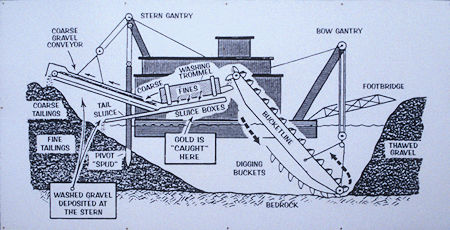
Gold Dredge diagram
The dredge moved along on a pond of its own making, digging gold bearing gravel in front, recovering the gold through the revolving screen washing plant, then depositing the gravel out the stacker at the rear.
A dredge pond could be 300 feet by as much as 500 feet wide, depending on the width of the valley in which the dredge was working. The operating season was on average about 200 days, starting in late April or early May and operating 24 hours a day until late November.
The dredges were a very efficient means of mining for gold. The very fine flour gold however was very hard to save, as were nuggets too large to go through the 1 1/8 inch holes in the revolving screen, or those caught in the nugget catcher. These went up the stacker and out to the tailing piles.
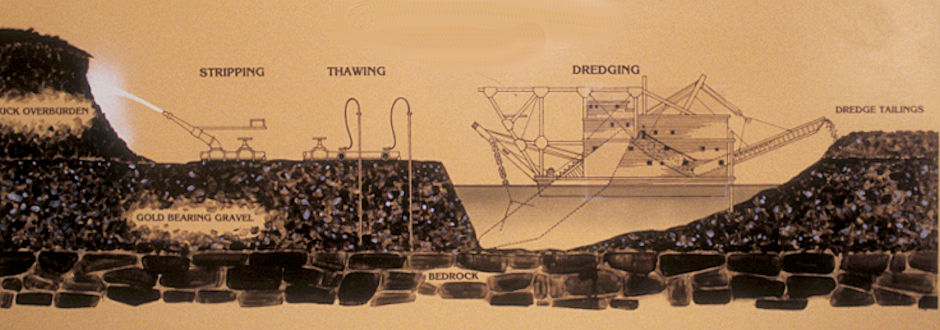
National Historic Designation
During the summers of 1991 and 1992 the dredge was excavated, refloated and relocated to its current position on higher ground to protect it from seasonal flooding. Parks Canada continues to make significant investment in the restoration and stabilization of the Dredge, a significant historic resource and local tourism attraction.
Here are pictures of Gold Dredge #4 that I took on August 6, 1998.

Dredge #4 ore buckets
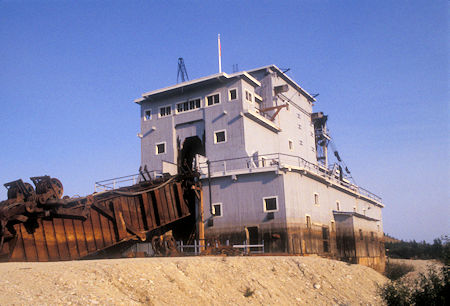
Dredge #4 ore buckets
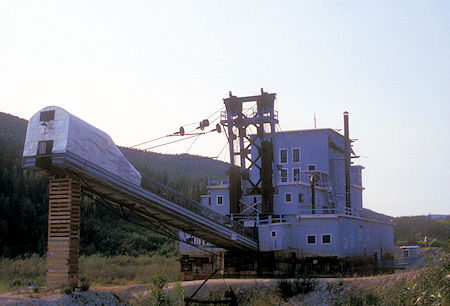
Dredge #4 waste conveyor
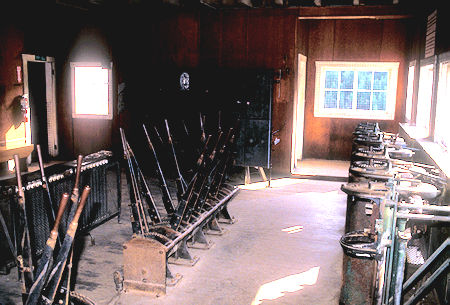
Dredge #4 dredgemasters room and controls
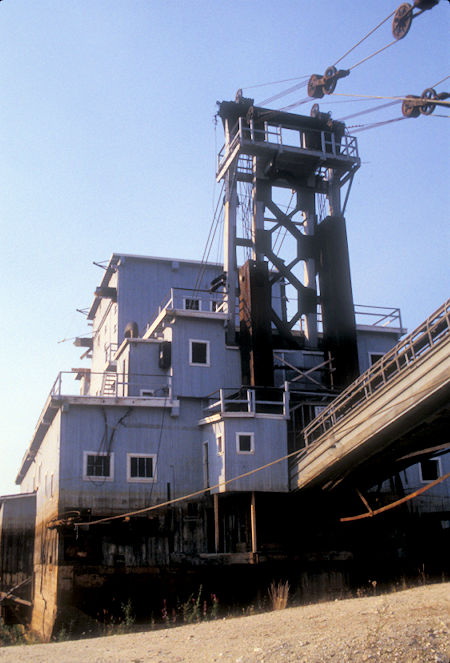
Dredge #4 closeup of waste conveyor hoist structure
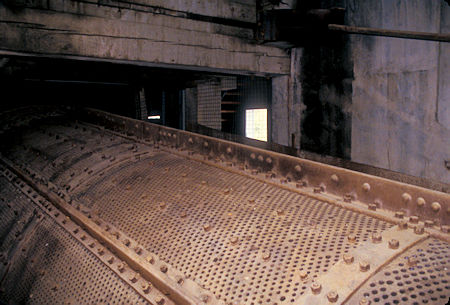
Dredge #4 wash trommel
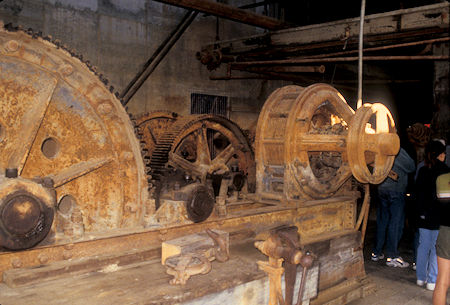
Dredge #4 machinery
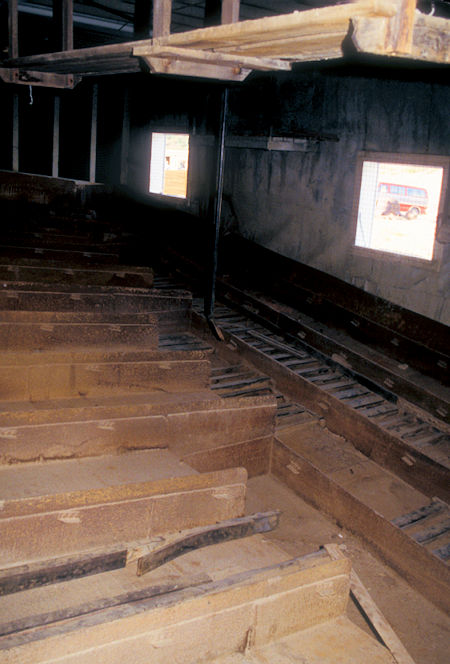
Dredge #4 separation stack
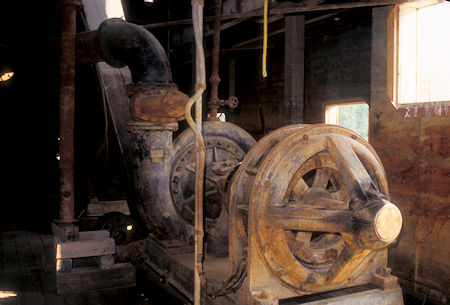
Dredge #4 machinery
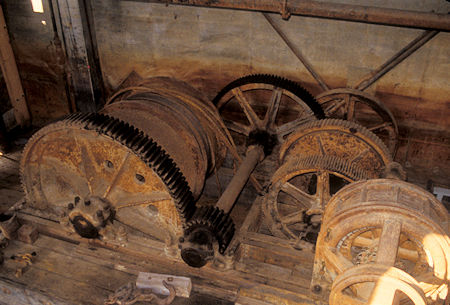
Dredge #4 cable hoist machinery
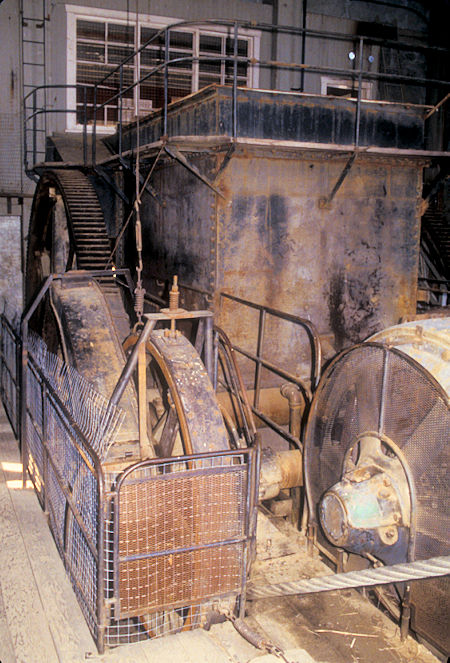
Dredge #4 machinery
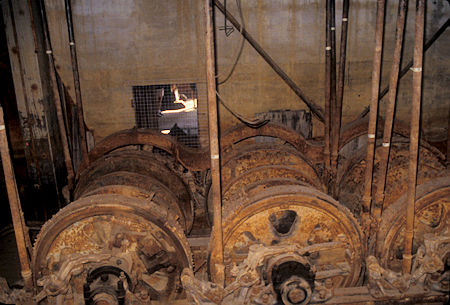
Dredge #4 machinery
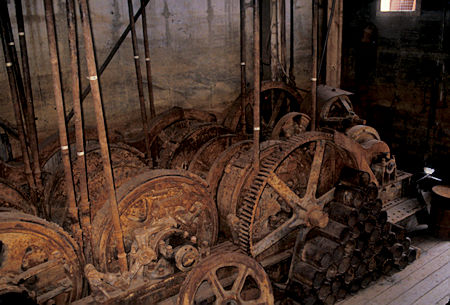
Dredge #4 machinery